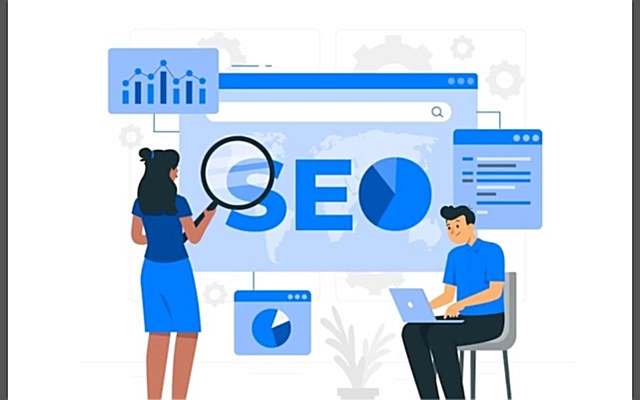In the fast-paced digital age of 2025, the significance of digital marketing cannot be overstated.
As businesses continue to adapt and evolve, the allocation of resources to digital marketing has become crucial.
According to forecasts, digital advertising spending is set to reach a staggering $602.25 billion in 2025, underscoring the undeniable impact and potential of the digital realm.
Why Digital Marketing in 2025?
In an era dominated by technological advancements, digital marketing has become indispensable for businesses aiming to thrive in the competitive landscape of 2025.
The following points delve into the multifaceted reasons why a robust digital presence is crucial for offline businesses.
1. Enhancing Brand Visibility in a Saturated Market
Standing out amidst a saturated market is paramount for any business’s success.Digital marketing offers a powerful platform to boost brand visibility through strategic utilization of various channels, including:

- Social Media Amplification: Leveraging popular platforms like Facebook, Instagram, and Twitter to connect with the target audience, foster engagement, and build lasting brand recognition.

- SEO Strategies for Online Discoverability: Implementing effective Search Engine Optimization (SEO) practices to ensure that the business ranks high on search engine results, increasing organic visibility.
- Content Marketing for a Lasting Impression: Crafting compelling and informative content that not only positions the business as an industry authority but also enhances search engine rankings, thereby driving organic traffic.
2. Cost-Effectiveness as a Strategic Advantage
Digital marketing proves to be a cost-effective alternative to traditional advertising methods, particularly beneficial for smaller businesses operating on limited budgets.
The judicious use of resources in digital campaigns allows businesses to:
- Target Wider Audiences: Utilize targeted strategies to reach a broader audience without incurring exorbitant costs, thereby optimizing the return on investment.
- Measurable Cost Per Acquisition: Employ metrics such as Cost Per Click (CPC) and Cost Per Acquisition (CPA) to analyze and optimize ad spend, ensuring efficient budget utilization.
3. Strategic Content Diversification
A robust content strategy serves as the backbone of successful digital marketing, allowing businesses to cater to diverse audience preferences through various formats:
- Blogs: Regularly publishing insightful blogs not only establishes authority but also improves SEO, driving organic traffic to the business website.
- Visual Content: Engaging visual content, such as videos and infographics, captivates the audience’s attention and conveys information more effectively than text alone.
- Audio: The rising popularity of podcasts makes audio content an essential component of a comprehensive content strategy.
- Promotional Content: Leveraging promotions and discounts through digital channels entices potential customers and encourages repeat business.
4. Fostering Engagement and Building Community
Active engagement is key in the digital landscape, as it enhances the overall customer experience and builds a sense of community around the brand. Strategies include:
- Social Media Interaction: Social media platforms provide a direct line of communication with the audience, fostering engagement and loyalty.

- Webinars: Hosting webinars not only establishes the business as an industry expert but also allows for direct interaction with the audience.
- Infographics: Complex information can be simplified and made visually appealing through infographics, increasing shareability and engagement.
5. Real-Time Optimization Through Analytics
Digital marketing’s data-driven approach allows businesses to analyze efforts in real-time, optimizing campaigns for maximum effectiveness:

- Optimization and Analytics: The ability to analyze digital marketing efforts in real time allows businesses to optimize campaigns on the fly. This data-driven approach ensures resources are allocated to the most effective strategies.
- Increase ROI: Digital marketing offers a measurable return on investment. By tracking conversions, businesses can evaluate the success of their campaigns and adjust strategies to maximize ROI.
6. Creating Personalized Customer Experiences
Digital marketing enables businesses to tailor their messaging and offers to specific segments of their audience:
- Target the Local and Global Markets: With the internet breaking down geographical barriers, businesses can target both local and global markets simultaneously. Local SEO strategies can ensure visibility in specific regions, while Outsource SEO Services help businesses navigate and dominate international markets.

- Target Audience Personas: Understanding the demographics, preferences, and behaviors of the target audience is fundamental. Creating detailed customer personas guides marketing efforts, ensuring they resonate with the intended audience.
Mastering the Art of Digital Marketing in 2025: Essential Planning Tips for Success
Creating an effective digital marketing plan requires a systematic approach. Here is a step-by-step process to guide businesses through the process:
1. Set Clear Objectives: Establish SMART Goals
Initiate the planning process by defining specific, measurable, achievable, relevant, and time-bound (SMART) objectives that align closely with the overarching business goals.
These objectives provide a clear roadmap for the digital marketing plan.
2. Identify Your Target Audience: Create Detailed Personas

Gain a profound understanding of the target audience by constructing detailed customer personas based on demographics, interests, and behaviors.
This ensures that marketing efforts are precisely tailored to resonate with the intended customer base.
3. Choose Appropriate Channels: Align with Audience and Objectives
Select digital channels that best align with the identified target audience and overall business objectives.
This may include platforms such as social media, search engines, email marketing, and more, ensuring a strategic and targeted approach.
4. Develop Compelling Content: Cater to Diverse Preferences

Craft high-quality and relevant content across various formats to cater to diverse audience preferences.
The goal is to maintain engagement and interest by delivering content that is valuable and resonates with the target audience.
5. Implement SEO Strategies: Optimize for Online Visibility
Optimize the business website for search engines to enhance online visibility and attract organic traffic.
Strategic use of keywords and SEO practices ensures that the digital presence is effectively leveraged to reach a wider audience.
6. Utilize Paid Advertising: Efficiently Expand Reach
Leverage paid advertising campaigns on platforms like Google Ads or social media to rapidly expand reach.
This allows businesses to maximize exposure and target specific audience segments with precision.
7. Monitor and Analyze: Track Key Performance Indicators (KPIs)
Implement a robust analytics strategy to regularly track key performance indicators (KPIs).
This data-driven approach enables businesses to evaluate the effectiveness of their marketing strategies and make informed decisions based on real-time insights.
8. Adjust Strategies as Needed: Data-Driven Refinement

Based on the analytics and performance metrics, refine and adjust strategies to optimize results.
This iterative process ensures that the digital marketing plan remains dynamic and adaptable to changing market conditions.
9. Build Relationships: Foster Customer Connections
Actively engage with the audience through comments, direct messages, and social media interactions.
Building meaningful relationships with customers not only enhances brand loyalty but also contributes to a positive and engaged community.
10. Evaluate and Evolve: Continuous Improvement for Long-Term Growth
Periodically evaluate the overall digital marketing plan.
Identify areas for improvement and evolution based on changing market trends, customer behavior, and performance metrics.
This continuous improvement cycle is essential for sustained long-term growth.
By following this comprehensive process, businesses can create a digital marketing plan that is not only strategic but also adaptable to the dynamic nature of the digital landscape.
This approach ensures that efforts are focused, data-driven, and geared towards achieving tangible business objectives.
Conclusion
In conclusion, the landscape of business is evolving rapidly, and having a robust digital presence is no longer optional.
Partnering with a trusted digital marketing agency like Uvisible can make all the difference. With the right digital marketing strategies in place, offline businesses can not only survive but thrive in 2025 and beyond.
By understanding the nuances of digital marketing, embracing a variety of content formats, and consistently engaging with the audience, businesses can unlock new avenues for growth and establish a lasting connection with their customers.
